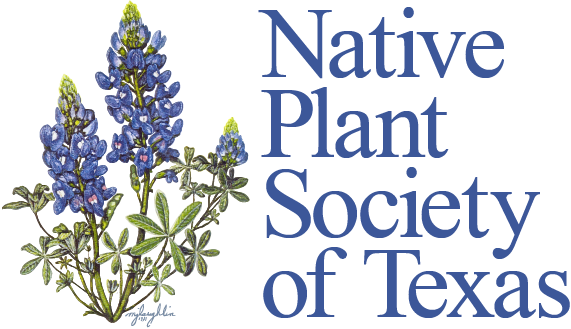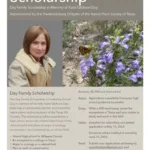The Day Family Scholarship is a $2500 one-time award, established in 2024 in memory of Katie Gibbons Day, a lover of the native ecosystems of Texas. Katie was a long-term member of the Fredericksburg chapter of the Native Plant Society of Texas (NPSOT). She was also a special education teacher for over 20 years. The scholarship will be awarded to a high school senior who shares Katie’s love of the natural world and plans to major in ecology, conservation, land stewardship, or similar field.
Scholarship Requirements
The applicant must be
1. A high school senior in Gillespie County, accepted into an accredited college or university in Texas;
2. Majoring in biology, botany, horticulture, landscape design or related fields, with an emphasis on Texas native plants or their ecosystems;
3, Planning a career related to conservation and habitat restoration of Texas native plants;
4. Have a cumulative high-school GPA of at least 3.0.
Application Materials
1. Completed application form
2. High-School Transcript through mid senior year
3. Year-end transcript
4, College acceptance letter
5. Letter of recommendation emailed directly from a teacher, addressing the applicant’s academic abilities and intended career path.
6. 500-word essay about the ecosystems in Texas and applicant’s desire to work in this field.
Submission Directions
Submit application materials via email to
npsotfredpres@gmail.com
with a copy to
dbday8241@yahoo.com
Deadline: Application forms and materials must be received on or before May 15.


